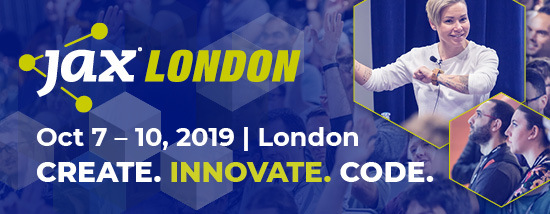Yes, today is a truly exciting day for Java enthusiasts. We have not one, but two releases on the way! We’re excited for JavaFX 13 as well, but for now let’s concentrate on enterprise Java with Jakarta EE 8. So with no further ado, let’s get down to celebrating Jakarta EE 8’s release with Mike Milinkovich!
JAXenter: Hi and thanks for taking the time for this interview. After many months of hard work, Jakarta EE 8 is finally released. It is feature identical with Java EE 8, but this does not mean that this release is in any way unspectacular. Can you please elaborate on how big the impact of the publication of Jakarta EE 8 really is?
Mike: In a word, huge. It’s honestly hard to overstate the impact of a diverse community of vendors, hundreds of dedicated community members, and Foundation staff all coming together to deliver the Jakarta EE 8 specifications for the Full platform and Web profiles, TCKs, and Eclipse GlassFish 5.1 fully certified as a Jakarta EE 8 compatible implementation. All of this was done under the Jakarta EE Specification Process, an open and vendor-neutral process that leverages and augments the Eclipse Development Process. That’s an incredible accomplishment.
With Jakarta EE 8, the community now has an open source baseline to collaborate on advancing enterprise Java and enabling the migration of real-world workloads to a world of containers, microservices, Kubernetes, service mesh, and other cloud native technologies that have taken off in industry interest and adoption.
JAXenter: Jakarta EE 9 will possibly include some new functionality, but until that is going to happen, another decision has to be made by the community: How to deal with the namespace problem. Will it be the big bang or the incremental approach?
Mike: That’s a great question and this is something that is still under active discussion. The entire community was invited to provide input and that conversation is going on as we speak. So far, we have more than 300 responses. Overall, we’ve seen a slight preference for the Big Bang approach from the community. Regardless of which approach we take, we need to ensure that binary compatibility is taken care of.
JAXenter: Which one would you prefer?
Mike: I think a clean separation and fresh start would be in the community’s best interests, so I’m a fan of the Big Bang approach.
SEE ALSO: Jakarta EE & Eclipse MicroProfile – two names, one family?
JAXenter: When can we expect to have a clear and definitive answer on how to proceed?
Mike: Sometime in the next few months. The community has been heads-down delivering Jakarta EE 8, so after everyone catches their breath, release planning is top of the agenda. We expect all of the vendors in the Jakarta EE Working Group to certify their Java EE 8 compatible implementations as Jakarta EE 8 compatible, so there will be a lot of work to be done around that.
JAXenter: With the namespace problem out of the way, a new era of enterprise Java will be open for exploring. Are there any ideas for features yet that will likely be implemented in Jakarta EE 9 and beyond?
Mike: There is certainly a “wishlist” from the community and I have no doubt that we will work on implementing some of these items, but nothing has been set in stone just yet. I can definitely say that things like CDI alignment, modularity, and support for reactive streams are popular. There is also a lot of interest in greater support for microservices and Kubernetes-native deployments.
JAXenter: There is a new Process for determining new specs for Jakarta EE that replaces the Java Community Process (JCP). Can you explain how it is different from the JCP we all know and hated?
Mike: The Jakarta EE 8 specifications were developed under the Jakarta EE Specification Process and Eclipse Development Process, which are open, community-driven processes that replace the JCP for Java EE.
I think that the biggest change is that there is no longer a Spec Lead which has special intellectual property rights under the JCP. Historically, the Spec Lead also usually exerted strong control over the output of the expert group. The Jakarta EE Specification Process is a level playing field in which all parties are equal, and collaboration is a must. Some of the other significant differences include a code-first approach, rather than a focus on specifications as the starting point. You can also expect a more fully open, collaborative approach to generating specifications, with every decision made collectively by the community. All documentation related to the specifications, as well as the TCK will be based on the open source model of community generation. You also won’t see reference implementations but rather multiple, compatible product implementations, as well as a process of self-certification, rather than something run by a single organization.
SEE ALSO: Jakarta EE & Eclipse MicroProfile – ongoing discussions
JAXenter: Another thing that is not yet decided is the release schedule for the upcoming Jakarta EE releases. Will it be a regular and continuous process like Java (SE) has now or will it be more like in the olden days, when Java “was done when it was done”?
Mike: As a community, we are still working through the release cycles, so we can’t commit to a particular cadence just yet. That said, there is a strong commitment by everyone at the table to significantly increase the pace of innovation. Obviously, we need to strike a balance between factors like stability versus the pace of innovation, but the fact that a diverse community of vendors, developers, and enterprises will be discussing these issues in an open and inclusive manner that will help drive the success of Jakarta EE.
As you know, the broader Eclipse community has a track record of shipping large, complex software releases on time, to the day, for 15 years now. Last year, we moved to a quarterly release train for the Eclipse IDE and the maturity of our processes and our people have continued to deliver. In other words, the Eclipse community and staff have the maturity of process to support whatever release cadence the Jakarta EE community decides is in its best interests.
JAXenter: What are the next steps that have to be taken care of, say, until New Year’s Eve?
Mike: We’re definitely going to be planning for Jakarta EE 9, as well as helping the entire community transition to our new processes. And that should be plenty to keep us occupied until the New Year. Stay tuned though. We will have plenty to talk about between now and then.
The post Jakarta EE 8 release – the future is now! appeared first on JAXenter.
Source : JAXenter















